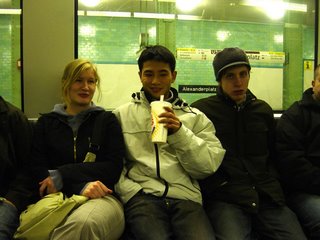 The new urgent challenge for artists and storytellers is to create interactive artifacts that can induce the same emotional reactions and communicate emotional content as traditional non-interactive stories and art have done.
The new urgent challenge for artists and storytellers is to create interactive artifacts that can induce the same emotional reactions and communicate emotional content as traditional non-interactive stories and art have done. In fact because the computer theoretically can be programmed to tailor the experience to an individual, it could become the most powerful medium of all for creating affective stories and art.
While emotions may be required for intelligence,... the most compelling interactions with virtual characters will not be in the area of functional agents. If a user encounters a virtual character that seems to be truly alive and have emotions, the user may instead want to befriend the character, not control them.
Users and interactive virtual characters have the potential to form emotional relationships with each other – relationships that are more than a reader’s or moviegoer’s affinity for a fictional character in a traditional story, and perhaps as meaningful as a friendship between real people.
By an emotional relationship we mean a set of long-term interactions where the two parties pay attention to the emotional state of the other, communicate their feelings, share a trust, feel empathetic, and establish a connection, a bond.
 What is most interesting about the phenomenon of virtual pets are not the toys and software themselves – some of which have minimal interactivity and little or no artificial intelligence driving them – but the fact that some people seem to want to form emotional relationships with them. Some appear quite eager to forget that these characters are artificial and are ready and willing to engage in emotional relationships, even when some of the virtual pets offer little or no reward or “warmth” in return. This offers some promise for the public’s acceptance of the concept of a more advanced virtual friend.
What is most interesting about the phenomenon of virtual pets are not the toys and software themselves – some of which have minimal interactivity and little or no artificial intelligence driving them – but the fact that some people seem to want to form emotional relationships with them. Some appear quite eager to forget that these characters are artificial and are ready and willing to engage in emotional relationships, even when some of the virtual pets offer little or no reward or “warmth” in return. This offers some promise for the public’s acceptance of the concept of a more advanced virtual friend.Stories have long been our primary way to observe and understand our emotional relationships. If stories could be made interactive – where users could immerse themselves in virtual worlds with characters they could talk to, form relationships with, touch and be touched by, and together alter the course of events, literally creating a new story in real-time – then we would have a new form of interactive entertainment that eclipses videogames.
Like traditional stories from books, theater, television and movies, an interactive story would be affecting and meaningful, but made all the more personal because the user helped shape it and create it (Stern 1998).
 We found that being able to (virtually) touch and hold the characters to be a very effective way of building emotional relationships and creating the illusion of life.
We found that being able to (virtually) touch and hold the characters to be a very effective way of building emotional relationships and creating the illusion of life.When perceiving a lack of affection, Petz will howl and yowl, sounding lonely; Babyz will cry and say “mama” or “dada” in a sad tone of voice.
We found if a virtual character cannot immediately show an emotional reaction, it will not seem believable. Timing is very important.
At the highest level in the architecture is the “free will” and narrative intelligence layer. This is custom logic that can spontaneously (using constrained randomness) spawn new goals and emotions to convey the illusion that the character has intent of its own.

For the artist, the act of creating a virtual character requires a deep understanding of the processes at work in the character’s mind and body. This has always been true in traditional art forms, from painting and sculpting realistic people to novels to photography and cinema, but it is taken to a new level with interactive virtual characters.
*http://www.interactivestory.net/papers/stern_emotionartifacts1999.html
No comments:
Post a Comment